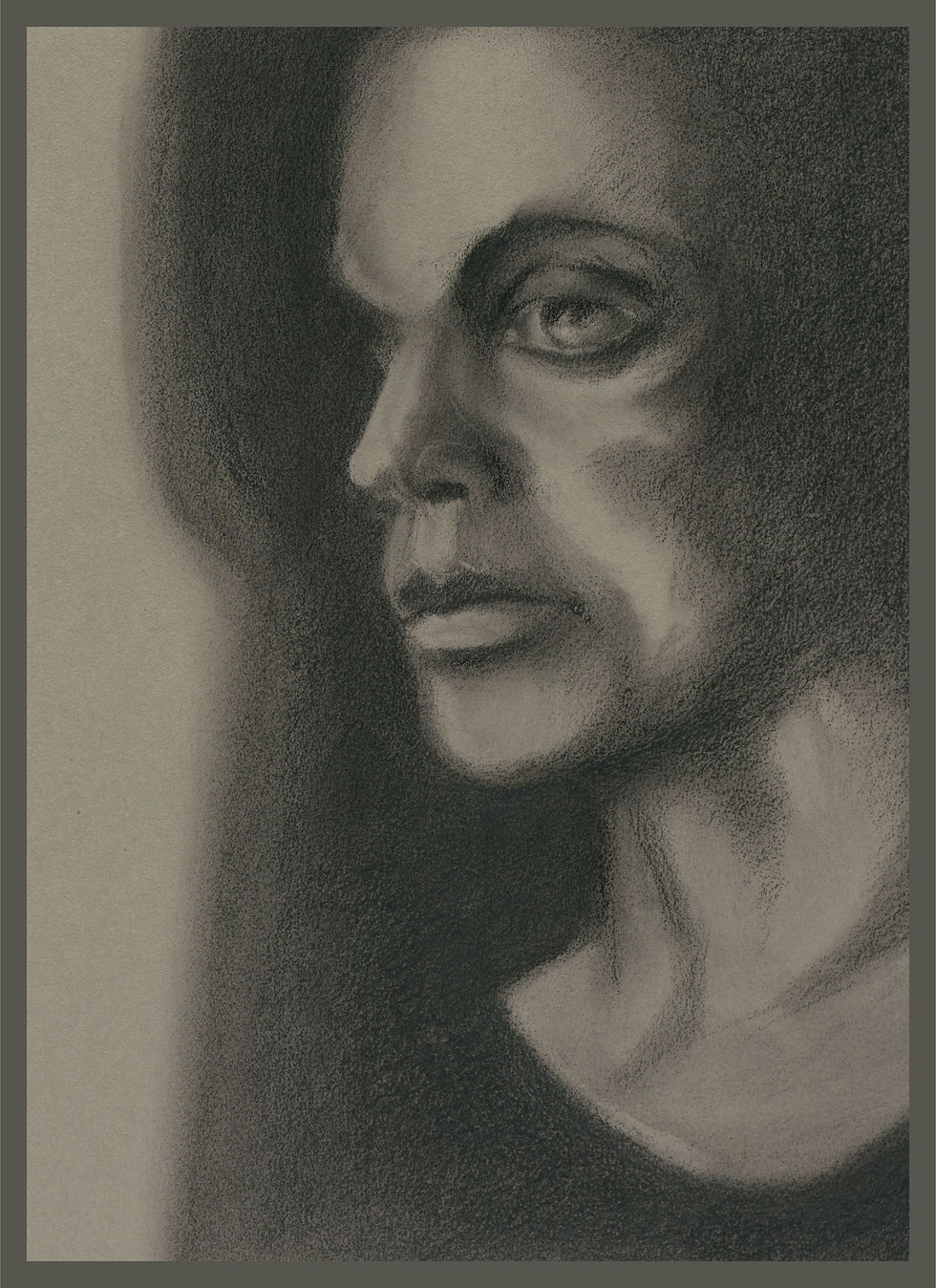La Llorona
"Echoes of Grief and Hope: The Depth of 'La Llorona'"
The painting "La Llorona" is a poignant depiction inspired by the ancient Mexican legend of La Llorona. The legend tells of a weeping woman who has lost her children and now eternally searches for them, her tears filling the river in which she lost them. The central motif of the painting is a woman draped in a dark robe. Her face is marked by sorrow, her eyes closed as if she refuses to accept reality or hides from the world. The dark tones of the painting reflect the weight and hopelessness of the legend. The surroundings around the woman are blurred and indistinct, highlighting the isolation and feeling of alienation many of us experience in daily life. It's as if the woman is trapped in her own world, unable to see the beauty and possibilities around her. The inspiration for this painting comes not only from the legend itself but also from the universal experience of grief, loss, and the often overwhelming weight of life. It serves as a reminder of how often we get lost in our own thoughts and emotions, how often we refuse to accept reality and flee from our own fears and insecurities. Yet "La Llorona" is not just a painting of despair. It is also a call for reflection. The pain the woman feels is a sign that something in her life was of great importance. It prompts the viewer to think about the things that are important to them, the reasons for their significance, and whether they want to continue nurturing these bonds. Overall, "La Llorona" is a powerful artwork that captures both the darkness and the light in human experience. It reminds us that, although life can often be painful and challenging, it is also full of possibilities and hope. It encourages us to let go, to reflect, and to open ourselves to the beauty and opportunities that surround us.
Das Bild "La Llorona" ist eine eindringliche Darstellung, die von der alten mexikanischen Legende von La Llorona inspiriert wurde. Die Legende erzählt von einer weinenden Frau, die ihre Kinder verloren hat und nun ewig nach ihnen sucht, wobei ihre Tränen den Fluss füllen, in dem sie sie verloren hat. Das zentrale Motiv des Bildes ist eine Frau, die in einem dunklen Gewand gehüllt ist. Ihr Gesicht ist von Trauer gezeichnet, ihre Augen sind geschlossen, als ob sie sich weigert, die Realität zu akzeptieren oder sich vor der Welt zu verbergen. Die dunklen Farbtöne des Bildes spiegeln die Schwere und Ausweglosigkeit der Legende wider. Die Umgebung um die Frau herum ist verschwommen und unbestimmt, was die Isolation und das Gefühl der Entfremdung hervorhebt, das viele von uns im Alltag empfinden. Es ist, als ob die Frau in ihrer eigenen Welt gefangen ist, unfähig, die Schönheit und Möglichkeiten um sie herum zu sehen. Die Inspiration für dieses Bild stammt nicht nur aus der Legende selbst, sondern auch aus der universellen Erfahrung von Trauer, Verlust und der oft überwältigenden Schwere des Lebens. Es ist eine Erinnerung daran, wie oft wir uns in unseren eigenen Gedanken und Emotionen verlieren, wie oft wir uns weigern, die Realität zu akzeptieren und vor unseren eigenen Ängsten und Unsicherheiten fliehen. Doch "La Llorona" ist nicht nur ein Bild der Verzweiflung. Es ist auch eine Aufforderung zur Reflexion. Der Schmerz, den die Frau empfindet, ist ein Zeichen dafür, dass etwas in ihrem Leben von großer Bedeutung war. Es fordert den Betrachter auf, über die Dinge nachzudenken, die für ihn wichtig sind, über die Gründe für diese Bedeutung und darüber, ob er diese Bindungen weiterhin pflegen möchte. Insgesamt ist "La Llorona" ein kraftvolles Kunstwerk, das sowohl die Dunkelheit als auch das Licht in der menschlichen Erfahrung einfängt. Es erinnert uns daran, dass, obwohl das Leben oft schmerzhaft und herausfordernd sein kann, es auch voller Möglichkeiten und Hoffnung ist. Es ermutigt uns, loszulassen, zu reflektieren und uns der Schönheit und den Möglichkeiten, die uns umgeben, zu öffnen.
"La Llorona" La pintura "La Llorona" es una representación conmovedora inspirada en la antigua leyenda mexicana de La Llorona. La leyenda cuenta sobre una mujer que llora, que ha perdido a sus hijos y ahora los busca eternamente, sus lágrimas llenan el río en el que los perdió. El motivo central de la pintura es una mujer envuelta en una túnica oscura. Su rostro está marcado por el dolor, sus ojos cerrados como si se negara a aceptar la realidad o quisiera esconderse del mundo. Los tonos oscuros del cuadro reflejan el peso y la desesperanza de la leyenda. El entorno alrededor de la mujer está desenfocado e indistinto, resaltando la sensación de aislamiento y alienación que muchos de nosotros experimentamos en la vida diaria. Es como si la mujer estuviera atrapada en su propio mundo, incapaz de ver la belleza y las posibilidades a su alrededor. La inspiración para esta pintura no solo proviene de la leyenda en sí, sino también de la experiencia universal de duelo, pérdida y el peso a menudo abrumador de la vida. Sirve como un recordatorio de cuán a menudo nos perdemos en nuestros propios pensamientos y emociones, cuán a menudo nos negamos a aceptar la realidad y huimos de nuestros propios miedos e inseguridades. Sin embargo, "La Llorona" no es solo una pintura de desesperación. También es una llamada a la reflexión. El dolor que siente la mujer es una señal de que algo en su vida fue de gran importancia. Invita al espectador a pensar en las cosas que son importantes para él, las razones de su significado y si desea continuar nutriendo esos lazos.













